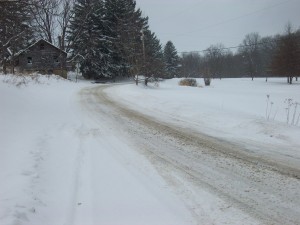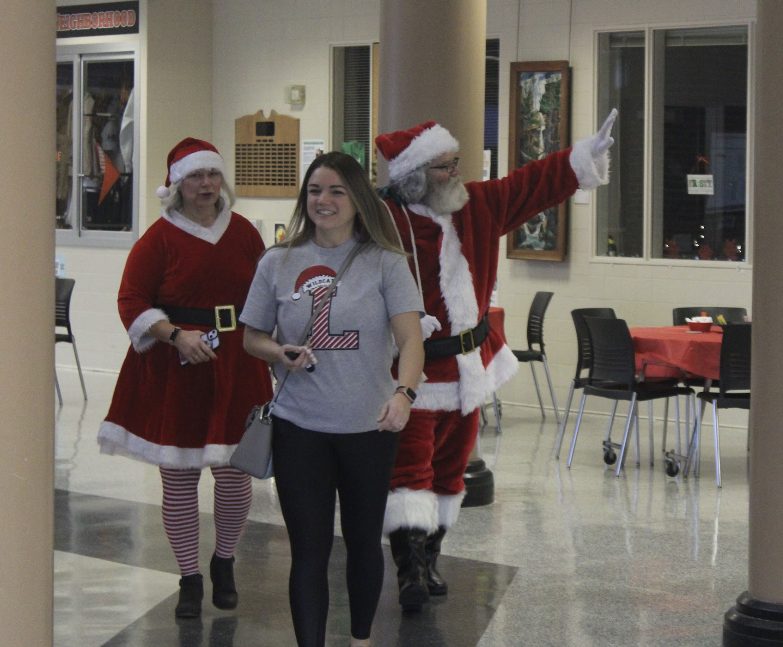 As another winter season shocks the nation, some reflect to last winter’s historic winter storms. Waking up to a new blanket of snow and the announcement of yet another day of classes canceled due to the snow seemed nice in the beginning, but proved wearying on days eight, nine, ten and finally, eleven. Three days off during the first week back to school from Christmas break climaxed to a full week of snow days in February, totaling eleven days. Shoveling the driveway daily became a chore and many disliked just the plain thought of snow or snow days.
As another winter season shocks the nation, some reflect to last winter’s historic winter storms. Waking up to a new blanket of snow and the announcement of yet another day of classes canceled due to the snow seemed nice in the beginning, but proved wearying on days eight, nine, ten and finally, eleven. Three days off during the first week back to school from Christmas break climaxed to a full week of snow days in February, totaling eleven days. Shoveling the driveway daily became a chore and many disliked just the plain thought of snow or snow days.
All in all, 77.8 inches of snow blanketed Southwestern Pennsylvania area last year for the first time in eighteen years. With every additional inch of snow that fell, students anticipated a call from global connect, text message alert, or a television report that dictated a two hour-delay or cancellation “It was one of the worst winters of our lifetime,” remarked Mark Mears, director of transportation. “We didn’t have a lot of experience to look back on when deciding to cancel classes.”
In fact, the 2010 winter season was ranked in the top five worst winters observed in the area, coming in third, ahead of the infamous “blizzard of 1993” when over two feet of snow fell in a span of three days. The worst winter occurred over sixty years ago, in 1950, when a whopping eighty-two inches fell over the winter season. For some, the snow of the winter season brings a sense of calmness, however, the same snow can also bring dangerous conditions, which affect academic time and consistency.
The school calendar is affected the most by winter snow days, according to Mears. If a day is missed, it needs to be made up. After the built in days during the school year are used, usually after four or more snow days, they are made up at the end of the year causing the graduation date to be changed for seniors. “It’s like a pebble thrown in pond, the after effects being the ripples on the water,” Mears remarked.
2010’s large amount of snow caused a unique situation for school district administrators, when deciding to cancel, delay or go along with classes normally. An even bigger decision was deciding how all of the days would be made up. In the end, days were made up over Easter break and during an additional week in June causing the last instructional day and graduation to be Thursday, June 10, 2010.
School district administrators gained experience from 2010’s winter to apply to this year, one that is expected by many to be harsh. An early dismissal policy was initiated stating when a late afternoon storm causes difficulty getting students home safely, the option to close and dismiss students early, as witnessed on December 13, 2010. In addition, as meteorologists predicted an afternoon snow storm expected to arrive early afternoon on January 11, a call was made the night before through global connect alerting parents that a early dismissal could be possible if forecasted snow came at the predicted time.
When it is determined additional hours will allow road crews to clear the roads, delays are often implemented. The creation of the three hour delays, specifically, was first announced as winter 2010 neared its end. The additional hour gives road crews even more time to clear roads and students can get a day of classes in, rather than canceling another day.
The district consists of approximately seventy-two square miles and each area poses its own issue. Specifically, for buses that travel over the higher peaks of western Pennsylvania’s ridges are now equipped with chains, ensuring all arrive safely to school.
Though one student may look out their window and see a clear road, another student in another area may not be able to see the road at all, thus having a hard time getting to school. Deciding to go normally, delay or even cancel the school day is not an easy task. “Sometimes, I’d rather have a foot of snow to deal with as it would make the decision process easier,” joked Mears.
The lengthy process of decision making usually begins when Mears wakes up around 3:00AM to drive about twenty-nine miles all over the district, getting a good idea of what area roads are like. In addition, neighboring school districts as well as township road supervisors are contacted to get other road conditions. Once Mears takes everything into account, he calls Mrs. Swigart with his recommendations. “Nothing will override students’ safety,” Mears stressed. “Not graduation. Not Easter vacation. Safety is most important when deciding.”
After the recommendations from Mears, road crews, and the bus company, as well as speaking to other local superintendents, Swigart makes the final decision.“Safety is paramount when deciding, no matter what,” says Swigart.
“After last winter, everybody predicted that this winter wouldn’t be as bad and I’m still hoping for that,” commented Swigart. “So far, it seems that we are going to have a worse winter.” This seems true as snow days were witnessed on December 14, 2010 and most recently, January 12, totaling two cancellations in the books for winter 2011. In the recent winter weather forecast, meteorologists from Pittsburgh news station WTAE predict thirteen inches in January, nine inches in February, eight inches in March, and .5 inches will end the winter season in April.







